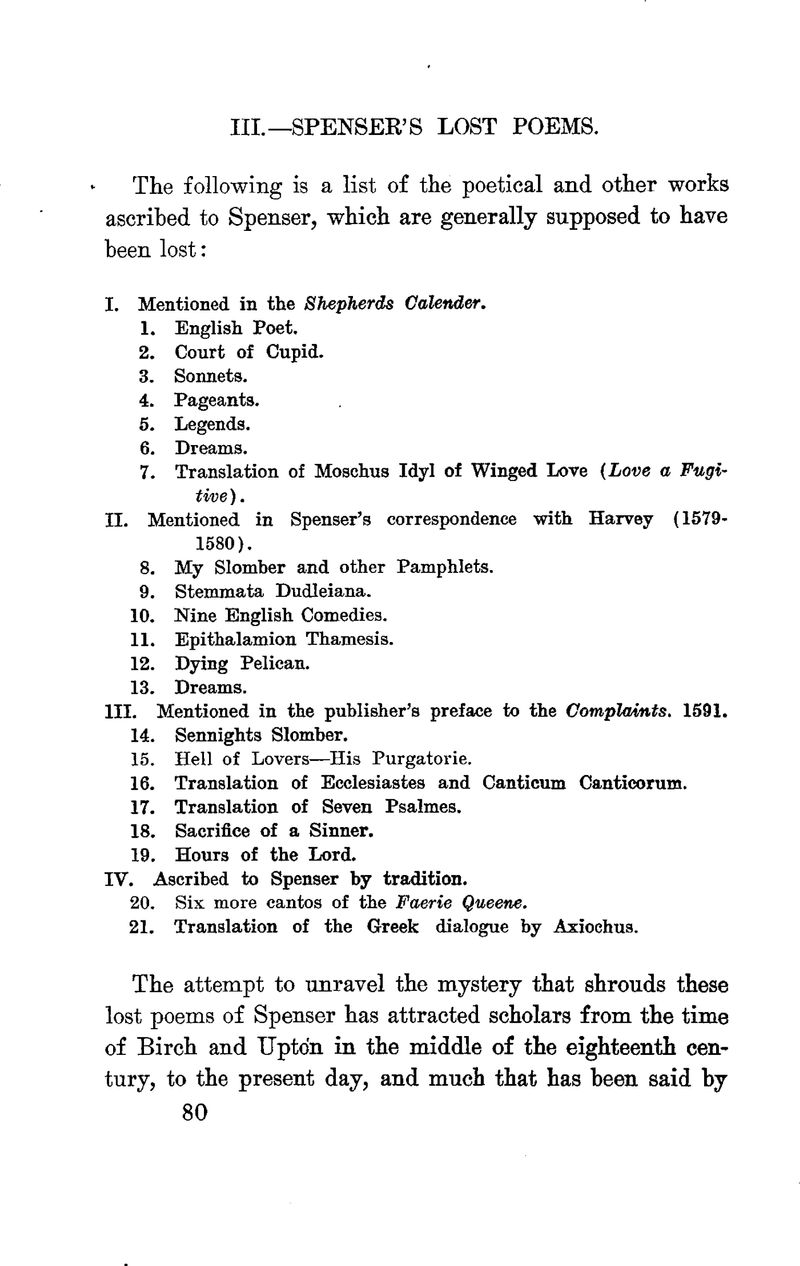No CrossRef data available.
Article contents
Spenser's Lost Poems
Published online by Cambridge University Press: 02 December 2020
Abstract

- Type
- Other
- Information
- Copyright
- Copyright © Modern Language Association of America, 1907
References
page 84 note 1 Lines 621 to 630 have been taken as a reference to the Queen's anger because of Leicester's marriage with Lettice Knollys, Countess of Essex. This would contradict the character given the Lion in the latter part of the poem. I prefer to explain the “ Golden circlet ” as the sign, not of marriage, but of the honored subject. The Queen wished to see the Lion, not a subject, but a free sovereign like herself.
page 84 note 2 The Ruins of Time for obvious reasons was evidently rewritten just previous to its publication. For this reason no references in it to Burleigh can be with certainty assigned to an earlier period. See Tears of the Muses, Clio, lines 61-96; Calliope, lines 445-456; and Visions, Sonnets 7, 8, 9, 10.
page 86 note 1 I am inclined to identify the Sennights Slomber with the Dreams. Spenser writing to Harvey on the 5th of October, 1579, calls it My Slomber. Ponsonbie saw this, and by a desire to improve similar to that which changed the Hymn in Honor to Love into the Hell of Lovers, changed it into A Sennights Slomber. Titles in those days were not copyrighted. We shall find other examples of changed titles later.
page 88 note 1 Mr. Towry in the article referred to above finds among Spenser's lost poems a sonnet prefixed to Harvey's Satires. Is not this the sonnet published now in the Globe Edition of Spenser's Works on page 607? Mr. Todd was the first to include this among Spenser's works.
In an article in Modern Language Notes, February, 1907, entitled Add. MS. 34064 and Spenser's Ruins of Time and Mother Hubberd's Tale, I have quoted two sonnets which contain references to the dying swan and dying pelican which are at least good enough to have been from Spenser's pen. So far as I know their author has not been discovered. If they are Spenser's we would have the lost Dying Pelican.
page 92 note 1 They are in a very rare sonnet structure, ababbec cdcddee. The stanzas of the first part of the Ruins of Time are ababbec. Spenser's favorite sonnet form is ababbcdccdcdee. They are, then, a compromise between the favorite sonnet form and the doubled stanza of the Ruins, one rhyme being carried over from the first half into the second half of the sonnet.
page 97 note 1 Towry regards the Tears of the Muses as prologues to, or parts of, the Nine English Comedies. He gives no reasons.
page 98 note 1 In F. Q., Book iv, Canto vi, is this line:
For lovers heaven must pass by sorrows hell.


